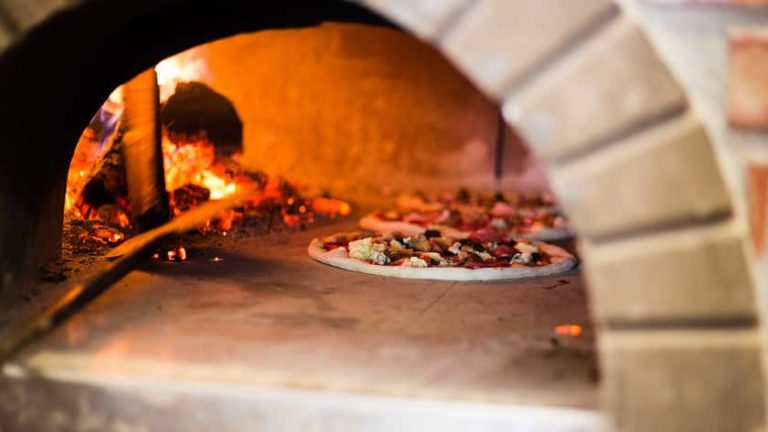How to Cook Chicken Sausage: Ultimate Guide for Perfect Results
Did you know that chicken sausage, a tasty protein, has become increasingly popular, with a 2019 study revealing a 15% rise in consumption? If you’re looking to add this flavorful and versatile ingredient to your culinary repertoire, you’ve come to the right place. In this guide, we’ll dive into the art of cooking chicken sausage, exploring various methods, including ways to bake it in the oven, for mouthwatering results. Whether you’re grilling, pan-searing, or baking in the oven, we’ve got you covered with simple yet delicious techniques that will elevate your meals.
What Is Chicken Sausage?
Nutrition Profile
Chicken sausage is a nutritious option for those looking for a low-calorie and low-fat source of protein. It offers essential vitamins and minerals, making it a healthy choice. For example, a typical serving of chicken sausage contains around 150 calories with lower fat content compared to pork sausages. It’s high in protein, providing the body with the necessary building blocks for muscle development and repair.
When choosing chicken sausage, opt for lean varieties to keep the calorie and fat content in check while still enjoying its flavorful taste. Some options include apple or spinach feta flavors that add an extra dimension to your dishes without compromising on nutrition. Moreover, consider selecting organic or nitrate-free chicken sausages to avoid unnecessary additives that may affect health.
Choosing the Right Type
Selecting chicken sausage over other types can be beneficial due to its lower calorie and fat content. When preparing dinner, opting for chicken sausage allows you to enjoy a satisfying meal without excessive calories or fats commonly found in other types of sausages like pork-based ones. With various flavors available such as apple or spinach feta, you can experiment with different tastes while still reaping the nutritional benefits of this healthier alternative.
Remember that when cooking chicken sausage at home, choosing lean varieties will help maintain its nutritional value while delivering delicious flavor profiles.
Preparing Chicken Sausage for Cooking
Thawing Tips
Ensuring that it’s properly thawed is crucial. You can thaw the sausages in the refrigerator overnight for a slow and safe process. If you’re short on time, using the defrost setting on the microwave is a quick alternative. Another option is to submerge the sausages in cold water, which accelerates the thawing process.
Thawing your chicken sausage properly ensures even cooking and reduces the risk of undercooking or unevenly cooked sausages. For example, if you were planning to grill your sausages, failing to thoroughly thaw them could result in charred exteriors with raw insides.
Seasoning Ideas
There are numerous seasoning ideas you can explore. One popular choice is experimenting with Italian herbs and garlic, which imparts a savory and aromatic taste to the sausage. If you prefer a bit of heat, trying out spicy Cajun seasoning can provide an extra kick of flavor. On the other hand, if you enjoy simplicity, using simple salt and pepper can enhance the natural flavors of the chicken sausage without overpowering its taste.
Seasonings play a vital role in enhancing not only the taste but also aroma and overall appeal of cooked chicken sausages. For instance, by incorporating different seasonings into separate batches of sausages during preparation, one could create diverse options such as herb-infused sausages or spicy variations.
Cooking Chicken Sausage on the Stove
When cooking chicken sausage on the stove, it’s essential to use the right method to ensure that the sausages are perfectly cooked. A medium heat setting is ideal for this purpose. By cooking over medium heat, you can prevent burning and achieve even cooking throughout the sausage. This helps maintain juiciness and prevents dryness.
To prevent sticking and enhance flavor, lightly coat a large skillet with olive oil before adding the sausages. Alternatively, you can use non-stick cooking spray for added convenience. Consider using avocado oil if you prefer a higher smoke point. The choice of oil or cooking spray can greatly impact both the taste and texture of your chicken sausages.
Another crucial tip when cooking chicken sausage is to avoid overcooking them. After removing them from the stove, allow the sausages to rest before slicing or serving them. Allowing them to rest helps retain their juices and flavors while preventing dryness by letting the meat relax.
Cooking Chicken Sausage in the Oven
Preheat Instructions
Before cooking chicken sausage in the oven, it’s crucial to preheat it. This step ensures that the sausages cook evenly from start to finish. By preheating, you set the stage for achieving a delightful golden brown exterior on your sausages. This simple yet essential step can make a significant difference in the overall texture and flavor of your chicken sausages.
Cooking Time
To ensure juicy and succulent results when cooking chicken sausage, it’s important to monitor the cooking time carefully. Cook the sausages until their internal temperature reaches 165°F. This temperature indicates that they are thoroughly cooked and safe to eat. Remember that maintaining juiciness is key, so avoid overcooking them as this can lead to dryness and loss of moisture.
Cooking Chicken Sausage in an Air Fryer
To cook chicken sausage in an air fryer, set the temperature to 375°F for even cooking. This ensures that the sausages are thoroughly cooked without being overdone. When cooking, remember to flip the sausages halfway through the cooking time. This helps to achieve a crispy exterior on all sides and ensures that they cook evenly.
It’s important to adjust the cooking time based on the thickness of the sausage. Thicker sausages may require a few extra minutes of cooking time to ensure that they are fully cooked. By making these simple adjustments, you can enjoy perfectly cooked chicken sausages with a deliciously crispy texture.
Serving Ideas
- Serve your air-fried chicken sausage on a toasted whole grain bun for a wholesome and satisfying meal.
- Pair them with grilled vegetables such as zucchini, bell peppers, or eggplant for a balanced and nutritious plate.
- For added flavor and flair, top your chicken sausage with caramelized onions or sautéed peppers.
Tips for Best Results When Cooking Chicken Sausage
When cooking chicken sausage, it’s crucial to manage the heat properly. This ensures that the sausages cook evenly without burning. Throughout the cooking process, monitor the heat levels closely. Adjust the heat as necessary to prevent overcooking or undercooking.
Consistent heat is essential for achieving perfectly cooked chicken sausages. If using a stovetop, maintain a steady temperature by adjusting the burner accordingly. For grilling, ensure that the grill maintains an even heat distribution to avoid hot spots.
Using a thermometer can greatly aid in ensuring that chicken sausages are cooked thoroughly but not overdone. A meat thermometer allows you to accurately gauge when the sausages have reached their safe internal temperature without drying them out.
Moisture retention is key when cooking chicken sausage as it helps keep them juicy and flavorful. Avoid piercing the sausages while they cook, as this can cause moisture loss and result in dry sausages. Keeping a lid on your pan during stovetop cooking can help lock in moisture and prevent excessive evaporation.
Utilizing a meat thermometer not only prevents overcooking but also helps retain moisture by allowing you to remove the sausages from heat at precisely the right moment.
Storing Suggestions for Leftover Cooked Chicken Sausages
It’s essential to follow proper guidelines to maintain their quality and ensure food safety. After enjoying your delicious meal, store any remaining cooked sausages promptly in an airtight container before refrigerating them. This helps prevent the absorption of odors from other foods and maintains the sausage’s moisture.
Refrigeration is key. Place the sausages in a clean, airtight container before placing them in the refrigerator. Remember to consume them within 3 days of refrigeration for the best quality and taste. To make things easier, label the container with the date you stored the sausages so that you can easily track how long they have been kept.
When reheating leftover cooked chicken sausages, there are several simple methods you can use to warm them up without compromising their flavor and texture. You can gently reheat them in a skillet with a splash of water; this method helps retain moisture while ensuring even heating throughout. Alternatively, covering the sausages when warming them in a microwave prevents drying out while maintaining their juiciness. For those who enjoy a smoky flavor, grilling briefly is also an excellent option for reheating cooked chicken sausages.
Serving Suggestions for Chicken Sausage
Accompaniment Ideas
When serving chicken sausage, consider pairing it with creamy mashed potatoes to create a comforting and satisfying meal. The smooth texture of the mashed potatoes complements the savory flavor of the sausage, offering a delightful combination of tastes and textures. You can enhance the experience by offering tangy mustard or spicy ketchup as condiments. These add an extra kick of flavor that perfectly complements the rich taste of chicken sausage. For those looking to incorporate chicken sausage into other dishes, consider adding diced pieces to pasta dishes or salads for added protein and flavor.
Presentation Tips
To elevate the visual appeal of your chicken sausage dish, garnish it with fresh herbs such as parsley or chives. This simple addition adds a pop of color and freshness to the plate, making it more visually appealing. When arranging sausages on the plate, try placing them diagonally instead of in a straight line; this creates an interesting visual effect that makes the dish more engaging to look at. Furthermore, using colorful side dishes like vibrant steamed vegetables or roasted bell peppers can enhance the overall presentation by adding variety and contrast to the plate.
Final Remarks
You’ve now mastered the art of cooking chicken sausage like a pro! Whether you prefer it sizzling on the stove, crispy from the oven, or perfectly air-fried, these methods guarantee a delicious outcome every time. Remember to keep an eye on your sausages while they cook and use the recommended internal temperature to ensure they’re safe to eat. Now, go ahead and impress your friends and family with your newfound chicken sausage culinary skills!
So, what are you waiting for? Get those pans sizzling and start cooking up a storm. Your next meal is just a few simple steps away from being a savory sensation. Enjoy your cooking adventure!
Frequently Asked Questions
How can I prepare chicken sausage for cooking?
To prepare chicken sausage for cooking, start by removing the casings if they have any. You can also slice or dice the sausages according to your preference. Preparing them in this way will help them cook more evenly and absorb flavors better.
What is the best way to cook chicken sausage?
The best way to cook chicken sausage depends on your preferences. You can cook it on the stove, in the oven, or in an air fryer. Each method offers a slightly different texture and flavor profile, so experiment with each to find your favorite.
Can you provide tips for achieving the best results when cooking chicken sausage?
Certainly! Make sure not to overcook the sausages as they may become dry. Consider adding some liquid, such as broth or wine, while cooking to keep them moist and flavorful. Experiment with seasonings and herbs to enhance their taste further.
How should leftover cooked chicken sausages be stored?
After cooking, store any leftover chicken sausages in an airtight container in the refrigerator. They should be consumed within 3-4 days for optimal quality. If you want to store them longer, placing them in a freezer-safe bag and freezing is recommended.
What are some serving suggestions for chicken sausage?
Chicken sausages are versatile and can be served in various ways. You can enjoy them on a bun as a hot dog alternative, sliced into pasta dishes or salads, or even added into breakfast scrambles or frittatas for a protein boost.






